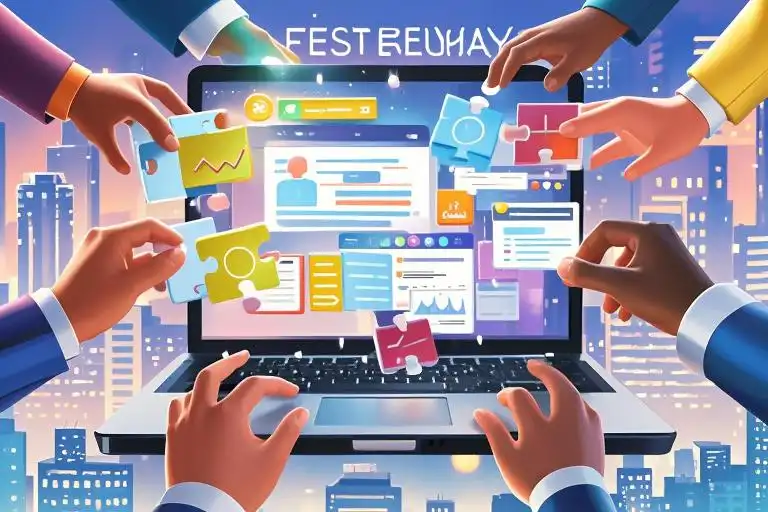Picture this: Your marketing team needs a custom app to track customer feedback—fast. In the past, you’d file a request with IT and wait months. Today? They build it themselves by Friday. No coding degrees. No endless meetings. Just drag, drop, done.
Welcome to the low-code revolution—where software development isn’t just for coders anymore.
Why Low-Code? Because Time Is Money
1. Speed That Feels Like Magic ✨
Traditional coding? That’s like hand-stitching a suit. Low-code? It’s 3D-printing a wardrobe. Platforms like OutSystems and Mendix let you:
- Assemble apps visually (think digital LEGO blocks)
- Reuse pre-built components (login screens, payment gateways, dashboards)
- Deploy in days, not months
Real-world win: A retail company built an inventory management app in 3 weeks—a project that previously took 6 months.
2. “Citizen Developers” Are Your New Superpower 💪
Your HR manager could create an employee onboarding app. Your sales lead might automate client reports. Low-code tears down the “tech vs non-tech” wall:
- 75% of enterprises now have citizen developers (Forrester)
- 44% faster project delivery when business teams self-serve (Gartner)
Pro tip: Start with small tools like survey forms or approval workflows. Watch confidence (and productivity) soar.
3. Cost Savings That Make CFOs Smile 🤑
Less code = fewer expensive developers. But the real savings? Avoiding “tech debt”:
- $3.7M = Average annual cost of legacy system maintenance (IDC)
- Low-code slashes maintenance by 60-80% through standardized components
Beyond Basics: Where Low-Code Shines
🏥 Healthcare:
- Build HIPAA-compliant patient portals
- Track vaccine distribution in real-time
🏦 Finance:
- Create fraud detection algorithms
- Automate loan approvals
🛒 Retail:
- Develop AI-powered recommendation engines
- Manage omni-channel customer experiences
The Developer’s Dilemma: Threat or Opportunity?
Myth: “Low-code will replace developers!”
Truth: It’s creating new hybrid roles like:
- Low-code architects (designing reusable components)
- Integration specialists (connecting APIs and legacy systems)
- AI workflow engineers (training machine learning models)
Salary alert: Low-code pros earn 12-18% more than traditional coders (Pluralsight).
3 Pitfalls to Avoid
- “Shiny Object Syndrome”
Don’t build apps just because you can. Start with clear business goals. - Vendor Lock-In
Choose platforms with open APIs (e.g., Microsoft Power Apps). Always have an exit plan. - Shadow IT Risks
Set governance rules: What data can citizen developers access? Who audits security?
The Future Is Bright (and Codeless)
What’s Next?
- AI co-pilots that suggest components as you design
- Voice-to-app features (“Hey platform, add a login page with facial recognition!”)
- Metaverse-ready tools for building 3D virtual workspaces
Hot trend: 68% of enterprises plan to adopt low-code for AI projects by 2025 (Gartner).
Your Action Plan
- Experiment: Try free tiers (Appian, Zoho Creator)
- Upskill: Get certified in top platforms (avg. salary boost: $22k)
- Collaborate: Pair citizen developers with IT for guardrails + creativity
Final Thought: Low-code isn’t about replacing coders—it’s about democratizing innovation. Whether you’re a CEO, marketer, or full-stack developer, the tools to build the future are now at your fingertips. What will you create?


